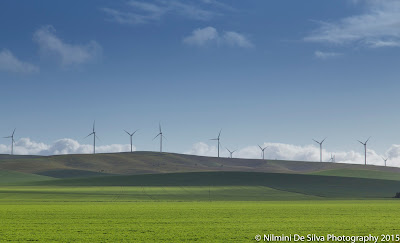A few days ago we celebrated Steve’s birthday. There were no signs of the traditional
trappings of candles and cake. But
rather, we hitched a ride on the mail run. Peter Rowe, the local mailman has lived in
these parts for much of his life and has a wealth of information about the
land, the Indigenous people and the European explorers. He came out for a 3-week holiday back in 1966
and never went back home. I love hearing the stories of people who have lived
life spontaneously and I know we are in for a treat.
We travel through gibber plains, red earth country and pass
120 million year old, former in-land seabeds with traces of cockles and mussels.
We come across a swathe of Stewart’s Desert Pea and pile out of the truck for
photos– it’s a real treat to see this spectacular flower in bloom in the wild.
We pass the world’s longest man-made structure, the Dingo Fence and learn of
the thousands of sheep that were lost in a day before this fence was erected.
It is double the length of the Great Wall of China and Pete’s friend patrols it
regularly to make sure there are no gaps.
It is a long day, a 12-hour round trip from Coober Pedy to
the Pink Roadhouse at Oodnadatta, through William Creek and back. Back in the old days, people trekked for
3-years on the Oodnadatta track to start a new life here. Women gave birth on the way and Oodnadatta
became a bustling town when the transcontinental railway reached here in 1891. It was also famous for the Afghan cameleers
who were critical in transporting mail, travellers and other freight to places
like Alice Springs. The track is steeped in history and we learn a little more
as the day progresses.
We talk about the importance of water in the desert. Back in
the old days, Peter remembers that water The area gets less than 5 inches of rainfall
a year, yet it also has downpours that have dropped 4” in 30 minutes and caused
floods that have destroyed much in its wake. This desert landscape hides more
than opal. It is rumoured there could be
large tracts of black coal underground.
Yet, underground is also the great Artesian Basin, a precious aquifer
that is the life-blood of this area.
Open cut mining is impossible but there are companies exploring the
option of fracking. One mistake could mean the beginning of the end of life in
these parts if the Artesian basin is contaminated. The sun that rains down on these parts offers
so many options for another form of energy…and we hope that options to explore
the mining of coal will not go further.
was rationed, at 200 litres/pp/week,
less than what the average Sydneysider consumes in a day! It takes a resilient
person to survive in the desert and as we hear the stories of the old explorers
and the people who continue to live in the cattle stations that dot this
landscape, we begin to understand the true meaning of the word, resilient.
Pete delivers mail to the many remote outposts from Mount
Barry Station to Anna Creek Station. The families come out to meet us and we
chat as Pete off loads his freight. We learn the history of Anna Creek station,
a station so big it is the size of Belgium.
Unfortunately, the family have finally decided to sell and foreign
buyers are bidding for the privilege of owning a piece of our history and the
largest cattle station in the world. Sadly it appears that the only two
Australian bidders are investment companies and the family is keen to sell it
to a cattle company.
We have lunch at Oodnadatta and it is a chance to get to
know our fellow travellers a little more. We make friends with a couple who
co-incidentally are from the same suburb in the Adelaide Hills as our friends
Sally and Pete who we first met in Turkey.
Janet is originally from California (a place I too called home for
almost a decade) and Roger from the UK and we have much to talk about. Another
two ladies are missionaries with the Salvation Army, who have lived in Sri
Lanka for decades…in the same suburb that I grew up in! I shake my head in disbelief – what a small
world we live in!
We are running late but we eventually arrive at William
Creek station. It is a hive of activity, has a wonderful vibe and delicious
food. When we left Sydney last month, I didn’t expect to be drinking a toast to
Steve’s birthday in the middle of the Australian desert with a dozen newfound
friends but that is the beauty and spontaneity of life on the road. I’m not
surprised that Steve chose the kangaroo yiros and he is amused at my choice of
goat curry—despite our travels we still crave the food of our heritage. We have
had a wonderful day but now it is time to do the long drive back home.
It is our last night under the stars in the Coober Pedy
desert. We say goodbye to this place
that has given us much to think about. The place takes its name from the
aboriginal word kupa-piti, meaning white man in a hole. The pursuit of opal,
just like at White Cliffs drew many adventurers, pioneers and explorers to this
land that appears on the surface to be a hostile place. But they learnt to
adapt to the hot summers, carving out their ‘dug-outs’—houses, bookshops and
churches constructed underground—as they pursued their fortune. We don’t think
we could call Coober Pedy home, but it has sure been fun to pass this way
again.













